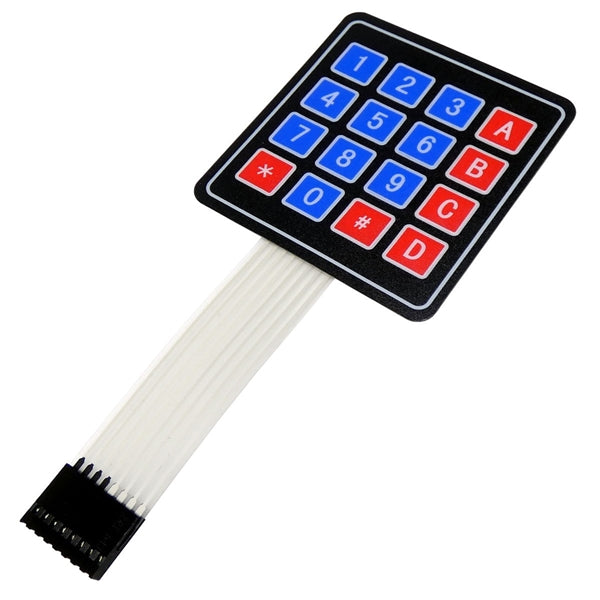Membrane Switch: A Comprehensive Guide to Its Uses and Applications
Membrane Switch: A Comprehensive Guide to Its Uses and Applications
Blog Article
Understanding Membrane Switches Over: The Secret to Sturdy and Reliable Controls

What Are Membrane Switches?
Membrane buttons are an advanced option in the realm of interface modern technology, integrating capability and design flawlessly. These tools function as an interface between users and digital systems, incorporating several components right into a small layout. Typically built from flexible, thin layers of products, membrane layer switches are created to react to touch, making it possible for customers to interact with equipment and electronic gadgets effectively.
The main components of a membrane button consist of a printed circuit layer, visuals overlay, and a spacer layer that avoids unintended activation. The visuals overlay can be personalized to reflect brand name identity or individual choices, improving visual appeals while making sure usability. Membrane switches are frequently utilized in various applications, consisting of medical devices, consumer electronic devices, and commercial devices, owing to their durability and resistance to environmental elements such as wetness and dirt.
Among the essential benefits of membrane buttons is their capacity to endure wear and tear, making them ideal for high-traffic environments. Additionally, they are light-weight and require very little area, permitting for cutting-edge designs in product growth. On the whole, membrane changes stand for a reliable and sensible selection for modern-day digital interfaces, weding modern technology with user-centric design concepts.
Just How Membrane Layer Switches Work
The operation of membrane layer switches over hinges on an easy yet reliable device that converts customer input right into electronic signals. When a user presses the button, the top layer deforms, permitting a conductive element in the circuit layer to make contact with a matching conductive pad on the underside of the visuals overlay.
The style of membrane switches can differ, however they commonly integrate domes or tactile components to provide comments to the user, improving the general experience - membrane switch. The products utilized in membrane layer buttons, such as polyester or polycarbonate, add to their resilience and resistance to environmental variables, including dampness and dirt. The published circuits are typically enveloped, which safeguards them from wear and tear over time.
Benefits of Membrane Layer Switches

Additionally, membrane buttons are understood for their sturdiness. Created from robust materials, they are immune to dust, dampness, and physical wear, which considerably extends their life-span contrasted to traditional mechanical switches. This durability makes them particularly suitable for high-traffic atmospheres and applications requiring long life.
Another significant advantage is the simplicity of cleaning and upkeep. The smooth surface area of membrane changes reduces dust build-up and is usually resistant to spills, making them optimal for settings that need constant sanitization.
In addition, membrane buttons supply a structured profile, causing a thinner style that can be incorporated into numerous devices without adding bulk. This attribute not only boosts the visual appeal yet additionally adds to an extra ergonomic product layout.
Applications of Membrane Switches
Easy to use and functional, membrane buttons discover applications across a large range of sectors, More Bonuses consisting of clinical tools, consumer electronics, and industrial devices. In the clinical area, these buttons are indispensable to devices such as diagnostic tools, person surveillance systems, and infusion pumps, where integrity and simplicity of cleaning are important. Their ability to preserve and read review stand up to severe settings performance makes them perfect for such applications.

In customer electronic devices, membrane layer buttons are made use of in items like microwaves, washing equipments, and remotes - membrane switch. Their streamlined design permits user-friendly customer interfaces, boosting the general individual experience while supplying resilience and resistance to tear and wear
Industrial devices additionally gains from membrane layer switches, specifically in control panels for equipment and automation systems. These switches offer protection versus dirt and dampness, making sure constant efficiency in challenging atmospheres. Their adjustable functions permit suppliers to customize them to details operational requirements, enhancing performance and capability.
Picking the Right Membrane Layer Switch
When picking a membrane layer button, it is important to take into consideration different variables that influence efficiency and suitability for details applications. The main factors to consider consist of environmental conditions, responsive comments, sturdiness, and layout specs.
First, evaluate the operating setting; switches subjected to dampness, chemicals, or extreme temperature levels need particular materials to ensure long life and capability. Next, evaluate the demand for responsive comments. Depending upon user communication, some applications might take advantage of a tactile reaction to validate activation, while others might choose a non-tactile layout for visual factors.
Longevity is one more crucial variable; membrane layer buttons ought to be developed to withstand regular use, effects, and abrasion. Ensure the selected switch can important source endure the expected lifecycle, specifically in high-usage circumstances.

Final Thought
In verdict, membrane changes serve as crucial components in the design of durable and trustworthy control systems throughout various industries. The convenience of membrane changes enables for tailored solutions that meet certain functional demands, enhancing their value in modern-day technology.
Membrane switches over stand for a critical element of modern user interface layout, blending performance with resilience in various applications.Membrane switches are an innovative solution in the realm of customer interface innovation, incorporating capability and layout effortlessly. Usually built from versatile, thin layers of materials, membrane layer buttons are designed to respond to touch, making it possible for individuals to connect with equipment and electronic devices effectively.
The style of membrane layer switches can differ, however they commonly include domes or tactile components to provide responses to the user, improving the general experience.In verdict, membrane layer switches over serve as essential elements in the layout of resilient and trusted control systems throughout different markets.
Report this page